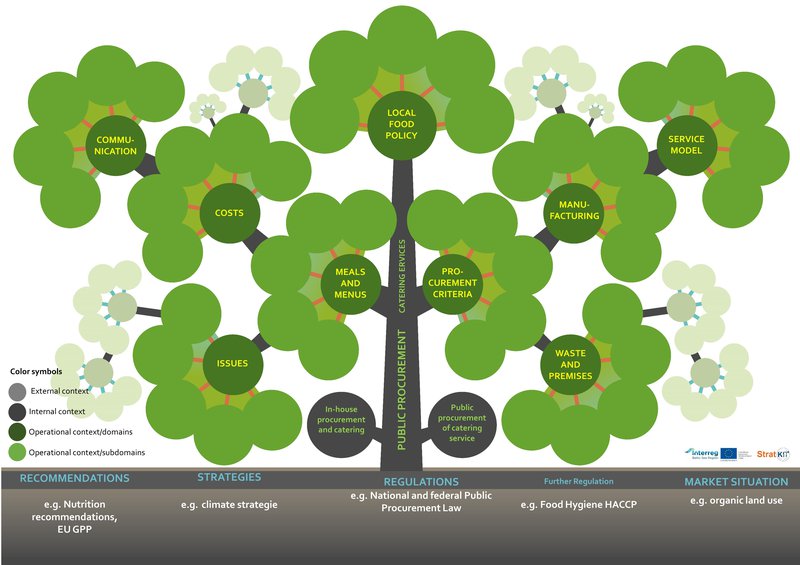Introduction
Public meals are provided by the public sector for citizens in specific institutions like schools, hospitals, nursing homes, or prisons. They are part of the food supply chain. The food supply chain includes food production (agriculture and fisheries), processing, distribution, preparation, consumption, and disposal. All these steps use up various resources and create environmental, social, and economic impacts. They provide food, create jobs, emit greenhouse gases, and affect biodiversity due to land use and agrochemicals. The sustainability of public meals depends on the sustainability of the supply chain. This in turn depends on questions such as, is the food supplied healthy and nutritionally adequate? Are the salaries fair? Are greenhouse gas emissions reduced to a minimum? Is biodiversity protected by certain agricultural techniques?
Sustainability is about acting in such a way that the need for resources tomorrow is not compromised by what is done today. The United Nations formulated the global Sustainable Development Goals (SDGs) in 2015 to motivate people, businesses, and governments to innovate and act to achieve them. In the EU, the Green Deal presents an ambitious approach to achieve sustainability goals by climate protection, the circular economy, zero-pollution, biodiversity, the Farm to Fork Strategy, and mobility policies. Food supply chains, and with them public meals, play an important role as they relate to several of the goals.
Sustainable public meals
Ideally, sustainable public meals meet dietary, socio-economic, environmental, ethical, and taste requirements, and are prepared by adequately skilled and paid professionals who use resource-efficient techniques. While this might sound like an unattainable ideal, a lot can be done. For example, environmental and social aspects can be included in procurement activities; dietary choices can be shaped to mitigate climate impact from production and trade; diversification in food items can benefit biodiversity; procedures to help boost the circular economy or resource-efficiency can be implemented; social aspects such as education and working conditions can be addressed. The sustainable public meals toolkit can help you to get started.
Tree model

To give you an idea of the many entry points towards more sustainable public meals, imagine the organisation of public meals as a tree (see figure). Strategies, regulations, and the local market situation form the basic context. Changing them will impact the system as a whole. The trunk symbolises public procurement with its rigidity and limited flexibility. The branches symbolise further operational aspects of public meals: the sustainability policies of the organisations, meals and menus, procurement methods and criteria, manufacturing and serving modes, communication, waste management, and more. Think of the leaves as multiple opportunities for making changes. To find out how to initiate these changes, take a look at the different tools we collected: public procurement, healthy and plant-based diets, food waste.